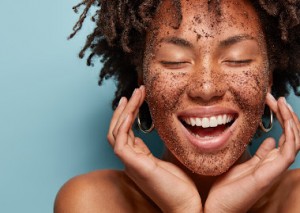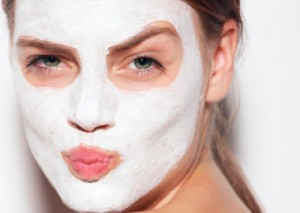
by BR Amelia
What's your hair type? Can you think of it off the top of your head? Are you unsure? Do you have absolutely no idea? Honestly, sometimes I feel like trying to figure out your hair type can feel like a classic case of:

I mean, sure, it's easy enough to say "my hair type is curly" or "my hair type is straight", but what about knowing whether it's dry? Or oily? Or oily but dry? Or how to tell if it's actually dry but overwashing is causing it to be oily? The mind boggles! Which is why we've put together the Beauty Review Guide to Hair Type.
Is my hair dry?
Signs your hair is dry can include your hair looking dull, tangling easily, as well as itching and flaking on your scalp. If your hair frizzes the second it gets a hint of humidity, that's a great clue too that your hair is on the dry side.
The simplest way to tell if your hair is Sahara-like is the strand test. Simply take a hair, stretch it out, and if it bounces back when you let it go, you know it's not dry, if it stays stretched or breaks, you've got dry hair on your hands.
Dry hair can come down to genetics and/or hormones, so while it can't always be fixed permanently, it can be helped with the likes of leave-in conditioners, hair oils and hair mask treatments. You'll also want to ensure that your shampoo is mild, and that your hair products don't contain alcohol, as this can further dry out your mop. As for styling tools... less is more. Keep blow drying, using curling tongs and straightening to a minimum, and when you do use your tools make sure it's in conjunction with a heat protectant.
Is my hair oily?
Oily hair can be pretty easy to spot. The roots look greasy, the hair feels heavy and weighed down. Another indication of oily hair could be that your hair colour fades quickly. The ultimate test, though, is the touch test. If it feels oily and/or sticky, you've got your answer.
So what can you do? First of all, try to stretch your hair shampooing regime out to every other day, as sometimes washing too often can stimulate oil production, exacerbating the problem. A clarifying shampoo used once or twice a week can help remove build-up, and when you use conditioner be sure to keep it away from your scalp and apply to the mid-lengths down. Struggling to make it to day two on your less-poo routine? Dry shampoo can be your best friend as it works to mop up excess oil, however you don't want to use it too often as it can cause the dreaded build-up of product which contributes to oily looking hair. As for using other hair styling products? You might want to avoid them as much as possible as they can further weigh down your tresses.
This last tip sounds counter-intuitive, but it can work: get yourself a boar bristle brush and brush your hair. This distributes the oil that accumulates at the top of your head, leaving your hair looking less greasy. HOWEVER... don't brush your hair too often or vigorously as that can cause an increase in oil production.
Is my hair a magical unicorn of neither dry nor oily?
So, how can you tell if you're the envy of many; one of those folk with hair that we'd call 'normal'?
Well, your hair will look shiny without being greasy, and it'll have a nice bounce. If you do the strand test, your hair will bounce back into shape. You won't experience scalp irritation or ridiculous amounts of frizz, and your hair will hold its shape when styled. Oh, and you'll be able to run a brush through it without raging at the tangles.
What do you need to do? Quite simply, be prepared to run when the rest of us come at you with our hair brushes and cans of dry shampoo.
So, do you know your hair type? Have you discovered your hair type isn't what you think it is? And does your hair type inform the kind of products you choose to buy? Chat below!















Mine is dry as I colour regularly so I always condition well at each wash and don't wash more than twice a week.